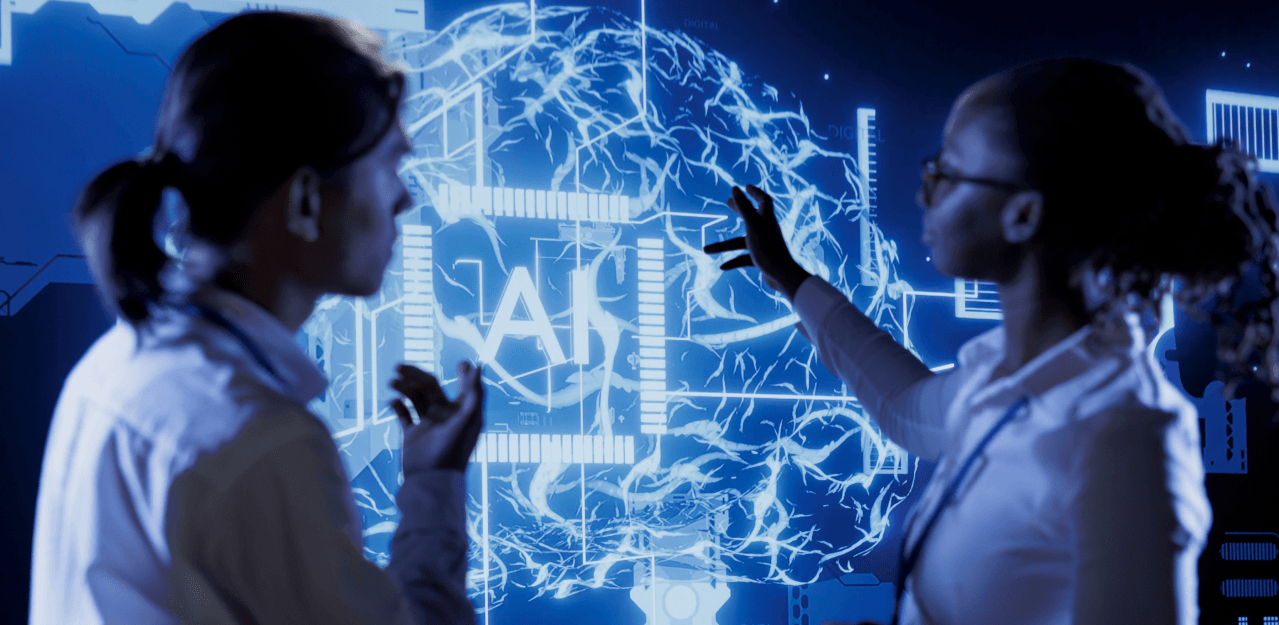As AI reshapes industries and offers unprecedented opportunities, you might be increasingly recognizing its potential to transform your business operations and drive growth. But here’s the real question. Are you truly AI-ready? Do you grasp the complexities involved in adopting this technology? And do you have a clear, actionable strategy to use AI effectively for your business? With 76% of leaders struggle to implement AI, it’s evident that AI readiness is not just a trend but a critical factor for success. While many statistics highlight the benefits of AI, it’s crucial to recognize that up to 70% of digital transformations and over 80% of AI projects fail. These failures could cost the global economy around $2 trillion by 2026. Understanding this risk underscores the importance of addressing potential pitfalls early on, and that’s where an AI readiness tool becomes essential.
So, how do you measure your own AI readiness, and what can it reveal about your potential for growth? Understanding this is key to utilizing AI’s full potential for your business.
What is an AI Readiness Assessment?
An AI readiness assessment is a comprehensive evaluation that determines how prepared your organization is to adopt and implement AI technologies. Think of it as a diagnostic tool that gives you a clear, objective view of where your business stands in terms of AI adoption. It’s not just about having the latest technology; it’s about having the right foundation. This means having robust data management systems, the right technical infrastructure, skilled personnel, and a strategy that aligns with your business goals.
The goal of this assessment is to offer you a tailored roadmap, guiding you from your current state to where you want to be with AI. It helps you avoid common pitfalls like overestimating your capabilities or underestimating the resources needed. By understanding where you stand, you can make more informed decisions about AI investments and strategies, setting your business up for success.
Key Metrics: How AI Readiness is Measured
When evaluating AI readiness, you must consider a comprehensive set of metrics that go beyond mere technical capabilities. The goal is to gain a holistic view of your organization’s ability to implement AI and to sustain and scale its use effectively. These metrics can be grouped into several key areas:
1. Data Maturity and Quality
Data is the lifeblood of AI, and its maturity is a fundamental metric in AI readiness assessments. Data maturity refers to how well your organization manages and utilizes its data. This means evaluating the quality, accuracy, and organization of your data. If you have a wealth of data but lack the systems to process and analyze it effectively, your AI readiness might be low. On the other hand, if your data is clean, well-organized, and accessible, you’re on the right track.
2. Technological Infrastructure
The technological infrastructure metrics involves evaluating the existing IT systems, software, hardware, and cloud capabilities that support AI initiatives. A robust and scalable technological infrastructure is necessary for deploying AI models and managing the computational demands they require. Organizations with outdated or fragmented systems may struggle to implement AI effectively, resulting in a lower readiness score. On the other hand, businesses that have invested in modern, flexible, and scalable infrastructure are better positioned to integrate AI seamlessly into their operations.
3. Talent and Skills Availability
The human element is vital in AI readiness. Assessments evaluate your organization’s AI talent, including data scientists, AI engineers, and machine learning specialists. To score well, you need a strong internal team or access to external expertise. The assessment also considers your commitment to upskilling and reskilling your workforce to meet the demands of AI technologies. If you prioritize ongoing AI training and development, you will be better equipped to adapt to the advancements in AI.
4. Strategic Vision and Leadership Commitment
AI readiness isn’t just about technology and data—it’s also about leadership and strategy. Evaluate how AI fits into your company’s growth strategy and the level of commitment from your leadership team. A clear AI strategy and strong leadership support are essential for driving AI initiatives forward and allocating the necessary resources. Companies with a well-defined AI strategy and strong leadership backing are more likely to succeed in their AI endeavors, reflecting a higher AI readiness score.
5. Ethical and Governance Frameworks
AI’s power comes with great responsibility, and it’s essential to understand and address its ethical implications, including bias, transparency, and accountability. If your company has clear governance policies for AI use, along with strong data privacy and security measures, you’re more likely to achieve sustainable AI adoption. Actively engaging in discussions about AI ethics and taking proactive steps to mitigate risks will show a higher level of AI maturity and readiness in your business.
6. Organizational Culture and Change Management
Your company’s culture can make or break AI adoption. Since AI often brings significant changes to processes, workflows, and even your business model, it’s crucial to assess how open you are to change. How well you communicate the benefits of AI to your team offers valuable insight into your organization’s readiness for AI. The way you manage the transition to AI-driven operations will highlight your company’s adaptability. If your culture embraces innovation, encourages experimentation, and supports change, you’re much more likely to implement AI successfully, leading to a higher readiness score.
7. Financial Readiness and Investment
AI initiatives often require significant investment in technology, talent, and infrastructure. Assessing your financial health and your willingness to invest in AI projects provides valuable insights into your financial readiness for AI adoption. Companies that have allocated sufficient budget for AI and have a clear understanding of the ROI expectations are more likely to achieve success with AI. Businesses that have a track record of investing in innovation and technology are seen as more financially ready to embark on AI initiatives.
By evaluating these key metrics, an AI readiness assessment provides a comprehensive picture of where a business stands in its AI journey. It identifies strengths and areas for improvement, helping you make informed decisions about how to proceed with AI adoption.
Translating AI Readiness into Business Growth
The insights gained from an AI readiness assessment are not just diagnostic; they are strategic assets that can be used to drive business growth. Here’s how organizations can translate AI readiness into tangible business outcomes:
Informed Decision-Making
Understanding your AI readiness allows you to make smarter decisions about where to invest in AI. By pinpointing areas where AI can create significant value—like enhancing customer experiences or optimizing operations—you can focus your efforts where they’ll have the most impact.
Customized AI Strategies
The results of an AI readiness assessment provide a blueprint for developing customized AI strategies that align with the organization’s unique needs and goals. For example, if the assessment reveals a strong data infrastructure but a lack of AI talent, you can prioritize partnerships or AI training programs to bridge the talent gap while capitalizing on its data strengths.
Risk Mitigation
AI readiness assessments highlight potential risks, such as data security issues or ethical concerns. Addressing these risks upfront helps you avoid costly setbacks and ensures a smoother AI adoption process, increasing the likelihood of successful implementation.
Continuous Improvement
Being well-prepared for AI adoption gives you a competitive edge. AI can drive efficiencies, cut costs, and spur innovation, helping you stay ahead of the competition. Leveraging your readiness assessment helps you maintain a leadership position in your industry.
AI readiness isn’t a one-time goal; it’s an ongoing journey. Use the insights from your assessment as a foundation for continuous improvement, and regularly reassess to stay at the forefront of AI technology and adapt to evolving challenges and opportunities.
In conclusion, AI readiness assessments give you a clear picture of where you stand and guide you on the steps needed for successful AI adoption and sustained growth. Whether you’re beginning your AI journey or refining your current approach, these assessments are crucial for turning potential into performance.
To know where you stand in your AI adoption journey, spend 15 minutes with our AI Readiness and Digital Maturity Assessment.
For personalized guidance on how our AI training for executives can boost your company’s innovation and growth, reach out to us at Random Walk. Let Random Walk partner with you to align AI with your business goals.






